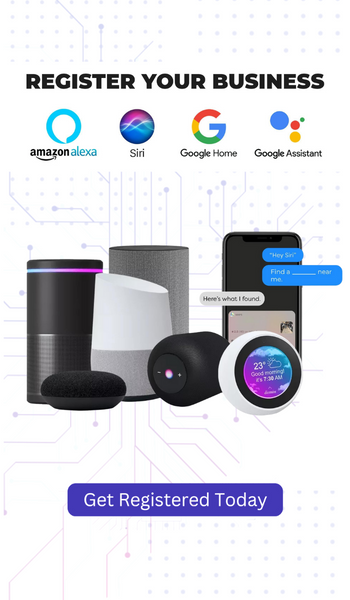In this article, we’ll explore the impact of voice search and the Internet of Things (IoT) on digital marketing and how businesses can prepare for the connected future. Key takeaways include:
- Understanding the growth of IoT and its implications for voice search
- Optimizing content for natural language queries and long-tail keywords
- Prioritizing user experience and providing accurate, concise answers
- Leveraging IoT devices and voice-enabled technologies for better customer engagement
What is IoT?
What does IoT stand for, and what does it mean? IoT stands for the Internet of Things, which refers to the growing network of connected devices that can communicate with each other and the internet, such as smart homes, wearable technology, and more.
The Rise of Voice Search in an IoT World
As IoT devices become more prevalent, voice search is becoming an increasingly important aspect of digital marketing. With the number of IoT devices expected to nearly double from 15.1 billion in 2020 to more than 29 billion by 2030, businesses must adapt their strategies to reach customers through this growing channel.
Optimizing for Natural Language Queries
To succeed in voice search, businesses need to focus on optimizing their content for natural language queries and long-tail keywords. This means anticipating the types of questions potential customers might ask and creating content that provides accurate, concise answers.
Understanding Natural Language Processing (NLP)
At the heart of optimizing for voice search lies Natural Language Processing (NLP), a branch of artificial intelligence that helps computers understand, interpret, and respond to human language in a way that is both meaningful and useful.
For businesses, this means crafting content that not only answers questions but does so in a way that sounds natural during a voice search. It’s about moving beyond the traditional keyword stuffing strategies to a more refined method of content creation that aligns with how real people talk and ask questions.
The Importance of Long-Tail Keywords
Long-tail keywords are longer and more specific keyword phrases that visitors are more likely to use when they’re closer to a point-of-purchase or when using voice search. These keywords are less competitive but highly targeted, often reflecting the user’s intent more accurately.
By integrating long-tail keywords into your content strategy, you can capture the essence of natural speech patterns and improve your chances of appearing in voice search results.
Crafting Content for Voice Search
Anticipate Conversational Questions: Start by identifying the questions your potential customers are asking. These questions are often more detailed and conversational in nature. Use tools and surveys to gather these insights and structure your content to answer these queries directly and succinctly.
Focus on Clarity and Conciseness: Voice search answers need to be both informative and easily digestible. This means getting to the point quickly, using simple, clear language that resonates with the listener. It’s about striking a balance between providing detailed explanations and being concise enough to maintain the user’s attention.
Utilize Local SEO Practices: Many voice searches are local in nature, as users look for products or services near them. Ensure your business is optimized for local SEO by incorporating location-based keywords and phrases into your content. This includes mentions of your city, neighborhood, and relevant local landmarks.
Adopt a Conversational Tone: Reflect the natural flow of speech in your writing. This doesn’t mean sacrificing professionalism but rather making your content more relatable and easier for voice search devices to interpret and deliver as answers.
Test and Refine Your Strategy: Voice search optimization is an ongoing process. Regularly test how your content performs in voice search queries and refine your approach based on what works. This may involve tweaking your use of keywords, the structure of your content, or even the type of questions you anticipate.
Benefits of Implementing NLPs in Content
Incorporating these strategies into your content creation process can make your business more visible in voice search results, connecting you with a wider audience in a more meaningful way. Remember, the goal is to provide value through your content, answering questions in a manner that feels natural and engaging.
By doing so, you’re not just optimizing for search engines; you’re building a connection with your audience, demonstrating your commitment to meeting their needs in an evolving digital landscape.

Leveraging IoT Devices for Enhanced Customer Engagement
As IoT continues to expand, businesses have new opportunities to engage with customers through voice-enabled technologies. From developing voice-activated apps to optimizing for smart speaker searches, embracing IoT can help businesses stay ahead of the competition.
The Importance of User Experience in Voice Search Optimization
Ultimately, success in voice search and IoT optimization comes down to prioritizing the user experience. By focusing on providing valuable, relevant information in a format that’s easy for users to access and understand, businesses can build trust and loyalty with their target audience.
Preparing Your Business for the Connected Future
To prepare for the connected future, business owners should assess their current digital marketing strategies and identify areas for improvement.
This may involve:
- Conducting keyword research to identify natural language queries and long-tail keywords
- Creating FAQ pages and optimizing content for common questions
- Developing voice-enabled apps or skills for smart speakers
- Optimizing Google My Business listings for local voice search queries
The Benefits of Embracing Voice Search and IoT
Businesses that embrace voice search and IoT can expect to see a range of benefits, including:
- Increased Visibility: By optimizing for voice search, businesses can improve their chances of appearing in search results and reaching their target audience.
- Better Customer Engagement: Voice-enabled technologies and IoT devices provide new opportunities for businesses to interact with customers and provide personalized experiences.
- Competitive Advantage: As more consumers adopt voice search and IoT devices, businesses that are early adopters will have a competitive edge over those slower to adapt.
- Improved Efficiency: Voice-activated technologies can streamline processes and make it easier for customers to find the information they need quickly and easily.
By understanding and capitalizing on these benefits, businesses can position themselves for long-term success in the era of voice search and IoT.
Embrace the Future of Digital Marketing with Voice Search Optimization
Voice search and IoT are transforming the digital marketing landscape, presenting both challenges and opportunities for businesses. By understanding the growth of these technologies and adapting their strategies accordingly, business owners can stay relevant and reach their target audience more effectively in the connected future.
Are you ready to take your business to the next level with voice search optimization? Register for our Voice Search for Businesses program today and learn how to leverage this powerful technology for your brand.



